ROMYNOX Glossary
DIN Werkstoffe number 1.4401 (DIN 17006)
Stainless steel grade equivalent to 316.
DIN Werkstoffe number 1.4404 (DIN 17006)
Stainless steel grade equivalent to 316L, with lower Nickel percentage than 1.4435 (X2CrNiMo17-12-2).
DIN Werkstoffe number 1.4435 (DIN 17006)
Stainless steel grade equivalent to 316L, with higher Nickel percentage than 1.4404 (X2CrNiMo18-14-3).
Declaration of compliance with the order 2.1 – EN 10204:2004
With the type 2.1, declaration of compliance with the order, the producer declares that the products are in accordance with the order. In this, the charge number of the products is given but neither the test report nor chemical analysis are announced.
Test report 2.2 – EN 10204:2004
With the type 2.2 test report document, the producer declares that the products are in accordance with the order. In the test report the quality control test results based on non- specific inspection are given, in accordance with the general material standards. The test results are not necessarily those from the lot supplied to the customer.
Inspection certificate 3.1 – EN 10204:2004
With the type 3.1, inspection certificate producers declare that the products are in accordance with the order. The relevant test results and chemical analysis results are presented in this document.
Inspection certificate 3.2 – EN 10204:2004
On the type 3.2 inspection certificate both the producer and an inspector either authorised by the customer or designated by the official regulations certify, that the products are in accordance with the order.
Stainless Steel 304 (AISI)
304 stainless steel is the most common stainless steel. The steel contains both chromium (usually 18%) and nickel (usually 8%) metals as the main non-iron constituents. It is an austenite steel. It is not very electrically or thermally conductive, and is non-magnetic. It has a higher corrosion resistance than regular steel and is widely used because of the ease in which it is formed into various shapes.
Stainless Steel 316 (AISI)
Type 316—the second most common grade (after 304); alloy addition of molybdenum prevents specific forms of corrosion. It is also known for its increased resistance to chloride corrosion compared to type 304.
Stainless Steel 316L (AISI)
Type 316L—is an extra low carbon grade of 316, generally used in the fabrication of pressure vessels for boiling water reactors, due to its high resistance to corrosion. It is immune to grain boundary carbide precipitation. This makes it suitable to use in welded components.
3-A Sanitary Standards
An independent, non-profit corporation dedicated to advancing hygienic equipment design for the food, beverage, and pharmaceutical industries.
UNS NO8904
Alloy 904L is a low carbon high alloy austenitic stainless steel which is widely used in applications where the corrosion properties of AISI 316L are not adequate. The addition of copper to this grade gives it corrosion resistant properties superior to the conventional chrome nickel stainless steels, in particular to sulphuric, phosphoric and acetic acids. It also has a high resistance to pitting in chloride solutions, a high resistance to both crevice and stress corrosion cracking.
Acrylicnitrile-butadiene-styrene
A thermoplastic resin with an excellent resistance to acids, bases, salts and some solvents. It is heat-resistant to 80°C.
Animal Derived Component Free (Animal Derived Ingredient free)
Materials and components that are used during processing and transfer are free of animal-derived ingredients.
Hastelloy Alloy 22
The predominant alloying ingredient is nickel. The primary function of the Hastelloy super alloys is that of effective survival under high-temperature, high-stress service in a moderately to severely corrosive, and/or erosion-prone environment, including the pressure vessels, chemical reactors, distillation equipment, and pipes and valves in chemical industry.
American National Standards Institute, Inc.
ANSI is the primary organization for fostering the development of technology standards in the United States.
Leakage Rates pressure relief valves
API Standard 527, from the American Petroleum Institute, describes seat tightness testing and the maximum acceptable leakage rates for pressure relief valves.
American Society of Mechanical Engineers
Creates consensus standards for Mechanical Engineering.
American Society for the Testing of Materials
Creates consensus standards for material quality and material quality testing methods.
Atmosphere Explosive
An abbreviation that is used in connection with two European Directives conceming production of equipment and safety systems for use in potentially explosive atmospheres and safety for personnel working in potentially explosive atmospheres.
For Sterilization
Autoclaving is a sterilization method that uses high-pressure steam. The autoclaving process works by the concept that the boiling point of water (or steam) increases when it is under pressure. Autoclaves can be used to eliminate microorganisms.
Welding with equipment that performs the welding operation without adjustment of the controls by a welding operator.
BioPhorum Operations Group
BPOG is a consortium of biopharmaceutical manufacturers and represents over 30 companies, which among others published a paper in Pharmaceutical Engineering titled “Standardized extractables testing protocol for single-use systems in biomanufacturing.”
BS 4825-3 standard
Stainless steel tubes and fittings for the food inductry and other hygienic applications, British Standards.
Nitrile rubber, also known as Buna-N
Synthetic rubber, a copolymer of acrylonitrile and butadiene. This form of synthetic rubber is unusual in being generally resistant to oil, fuel, and other chemicals.
A common mechanical seal face material chemically inert to most fluids with the exception of oxidizers, bleaches, halogens and a few other fluids.
Comite Européen de Normalisation
Committee for European Standardization. Creates standards that reflect the best practices in each industry and is supported by DIN and ISO.
Stainless Steel CF3M
CF3M is the cast equivalent of Type 316L (S31603). CF3M castings have good machining and welding characteristics.
Stainless Steel CF8M
CF8M is the cast equivalent of Type 316 (S31600). It is readily weldable and is not hardenable by heat treatment.
Current Good Manufacturing Practices
Current design and operating practices developed by the pharmaceutical industry to meet FDA requirements as published in the Code of Federal Regulations. They reflect the least common denominator of practices in the industry at present.
Clean in Place
The technique of cleaning process line components without the need for relocation or disassembly.
The Cv-value is a parameter defining the flow rate of valves. It describes the amount of water from 5° to 30°C which flows through the valve at a pressure loss of 1 bar. In some countries they use the Cv-value, they are related as Cv = 1.156*Kv.
Double-Acting
Any pneumatic actuator, which uses air to drive the actuator, output shaft in both the CW and CCW directions. The air supply is piped to one side of a piston-drive or a diaphragm while the air contained on the opposing side is exhausted.
A space where the system design and operating conditions result in insufficient process fluid flow, presenting a risk for particulate, chemical, or biological contamination.
Deutsches Institut für Normung
German Institute for Standardization. Creates engineering standards for Germany and is contributing body to CEN and ISO.
Deionized Water
Process of the extraction of deionized water through ion exchange resins.
European Hygienic Equipment Design Group
The group’s objective is to provide standardization organizations (CEN and ISO) with specialist views on hygienic and aseptic design by publishing requirements and test methods. Accredited bodies carry out cleaning tests which are certified if successful.
European Pharmacopoeia
European counterpart to USP. A private, non-profit organization that sets standards for drugs, drug ingredients, medical devices and diagnostics.
Electro-Polish
Electrochemical polishing process for metal components where metal ions are removed from the surface of the metal.
Ethylene Propylene Diene Monomer
This synthetic material has good resistance to strong acids, alkalies, salts and chlorine solutions. Its temperature range would be between -57°C to 177°C.
Electron Spectroscopy for Chemical Analysis
A procedure that uses electron beams to characterize the extreme outer surface of a metal. Typically used to determine levels of chromium oxide on the surface of austenitic stainless steel.
Ethylene Oxide
Ethylene oxide is one of the most commonly used sterilization methods in the healthcare industry because of its non-damaging effects for delicate instruments and devices that require sterilization, and for its wide range of material compatibility.
Ethylene Vinyl Acetate
Ethylene Vinyl Acetate Co-Polymer (EVA) is a copolymer of Ethylene and Vinyl Acetate. It is an extremely elastic and tough thermoplastic of excellent clarity and gloss and with little odor. The product has many attractive properties including excellent adhesion to polar and nonporous substrates, good flex-crack and puncture resistance, as well as good hot-tack and heat-sealing.
Leachables & Extractables
An extractable is a chemical entity, both organic and inorganic, that will extract from the components of a process system into a solvent under controlled conditions (usually extreme conditions not encountered in a process). This means high heat, pressure, or even multiple sterilization cycles. It also mean strong acids and organic solvents.
U.S. Food and Drug Administration
A federal agency of the United States Department and is responsible for protecting and promoting public health through the regulation and supervision of food safety, tobacco products, dietary supplements, prescription and over-the-counter pharmaceutical drugs (medications), vaccines, biopharmaceuticals, blood transfusions, medical devices, electromagnetic radiation emitting devices (ERED), cosmetics, animal foods & feed[5] and veterinary products.
Fluorinated Ethylene Propylene
FEP is a tough, flexible copolymer of tetrafluoroethylene and hexafluoropropylene. It is often used for flexible tubing and fluid processing equipment when chemical resistance, high purity, and low stiffness are required.
Perfluoroelastomers
FFKM rubber compounds have excellent resistance to high temperatures and chemicals. Certain grades have a maximum continuous service temperature of 327 °C.
Fluoroelastomer
FKM is the short form for the fluoroelastomer category according to the American standard ASTM. Most known as Viton®.
Fluoroelastomer
FPM is the international abbreviation according to DIN/ISO. Most known as Viton®.
For Sterilization
Gamma Irradiation is the process of exposing various products to ionizing gamma rays (similar to UV and X-rays) in a highly controlled manner for a specific goal, such as elimination of virus, bacteria, and other undesirable organisms etc.
The ability to resist a change in physical properties under gamma irradiation. Typically gamma irradiation is used in the plastics industry to sterilize tubing or process components in an aseptic container. Commonly acceptable doses range between 25 kGy and 55 kGy
Modified and restructured PTFE material. Trademark of Garlock (Rubber Fab).
High Efficiency Particulate Air Filter
A type of air filter that removes 99.97% of particles 0.3µ and larger in diameter.
The volume of liquid remaining in a vessel or piping system after it has been allowed to drain.
A tube outside diameter union consisting of two neutered ferrules having flat faces with a concentric groove and mating gasket that is secured with a clamp, providing a non-protruding, recessless product contact surface.
Thermoplastic Elastomer Engineered for Versatile Performance
DuPontTM Hytrel® TPC-ET thermoplastic elastomer is a versatile copolyester. It combines resilience, and heat and chemical resistance with strength and durability.
International Society for Pharmaceutical Engineering
A global not-for-profit membership organization that provides education, training and technical publications to pharmaceutical manufacturing professionals
International Standards Organization
Creates consensus standards for engineering and quality systems.
Cleanroom ISO class 1-9
Cleanroom classifications based on air particulate concentration as defined by the International Organization for Standardization, see page 306 for more information.
Safety devices for protection against excessive pressure
This European Standard specifies general requirements for safety valves irrespective of the fluid for which they are designed.
International standard for valve and actuator interface.
Polyarylamide (PARA or PAA)
Ixef® compounds typically contain 50-60% glass fiber reinforcement, giving them remarkable strength and rigidity. Ixef® is a registered trademark of Solvay
Perfluoroelastomers (FFKM)
Kalrez is the registered trademark of DuPont Performance Elastomers L.L.C.
The Kv-value is a parameter defining the flow rate of valves. It describes the amount of water from 5° to 30°C which flows through the valve at a pressure loss of 1 bar. In some countries they use the Cv-value, they are related as Cv = 1.156*Kv.
PVDF (polyvinylidene fluoride)
A trade mark of Arkema Chemical Corp. Kynar® tubing is an economic alternative to PTFE tubing.
Leachables & Extractables
Leachables are chemical entities that make their way into the product under normal product, application or storage conditions.
Low Density Polyethylene
LDPE (low density polyethylene) is a soft, flexible, lightweight plastic material. LDPE has good chemical and impact resistance and is easy to fabricate and form.
The pressure at which the system is capable of operating for a sustained period of time.
The temperature at which the system must operate for a sustained period of time. The maximum working temperature should relate to the maximum working pressure and the fluids involved.
A process by which abrasive media is applied to a surface until the specific surface roughness (Ra) is achieved.
Mill Test Report or Material Test Report
A Mill Test Report (MTR) is a quality assurance document used in the metals industry that certifies a material’s chemical and physical properties and states a product made of metal (steel, aluminum, brass or other alloys) compliance with an international standards organization (such as ANSI, ASME, etc.) specific standards.
NAMUR is an international association for users of automation technology in the process industries. One of their standards is the International Standard of Interface for Actuator Accessory Connections.
Nitrile butadiene rubber
Nitrile rubber (NBR), also called nitrile-butadiene rubber, an oil-resistant synthetic rubber produced from a copolymer of acrylonitrile and butadiene. Its main applications are in fuel hoses, gaskets, rollers, and other products in which oil resistance is required.
National Electrical Manufacturers Association
National Electrical Code Ratings for electrical component enclosures.
Synthetic rubber
Chemically and structurally similar to natural rubber.
Automatic or machine welding of tubes or pipe in-place with the electrode rotating (or orbiting) around the work. Orbital welding can be done with the addition of filler material or as a fusion process without the addition of filler.
The formation of the protective layer of nickel and chromium oxides that prevent the formation of iron oxide (rust). Stainless steel self-passivates when exposed to air. The process known as passivation is actually an acid cleaning process that removes surface contaminants and allow the stainless steel to form the integral passive layer when exposed to air. Passivation doesn’t change the appearance or surface finish.
Polycarbonate
PC is a tough, transparent plastic material with outstanding strength, stiffness, and impact resistance.
Parenteral Drug Association
Association for manufactures of injectable drug products. Publishes technical reports and other publications of interest to the industry.
Polyether ether ketone
PEEK is a semicrystalline thermoplastic with excellent mechanical and chemical resistance properties that are retained to high temperatures.
The cheaper way to cure silicone. Peroxide cured silicones, while less translucent, tend to have lower spallation tendencies and better pump life.
Polyethyleentereftalaatglycol
Transparent plastic sheet with good impact resistance and outstanding thermoforming characteristics.
Perfluoroalkoxy
PFA is a tough, flexible fluoropolymer that is used for flexible tubing and fluid processing equipment when chemical resistance, high purity, and low stiffness are required.
A common substance added to some plastics (usually PVC) to increase flexibility. It doesn’t bond with the plastic so over time it may be released into the environment. There are studies linking phthalates to a variety of ailments, particularly in children. Although, most tubing materials are phthalate-free by nature, some types of tubing are ridden with phthalates, such as flexible PVC.
Silicone rubbers have good resistance to hot air. They are unaffected by sunlight and ozone. The temperature range would be between -54°C to 260°C. Platinum cured products offer ultra-high purity characteristics with extremely low extractables and leachables.
An air operated mechanical device used to open and close or modulate a valve. The actuator, which is mounted to the valve by a bracket and coupled to the stem, is designed to convert air pressure into mechanical force sufficient to operate the valve.
A macromolecular material formed by the chemical combination of monomers having the same or different chemical composition.
A lightweight synthetic plastic.
Point of Use
A valve outlet in a recirculation utility system (typically a water system).
Polypropylene
PP is a light, universal thermoplastic which have the perfect properties for a range of conditions. In particular, their extensive, chemical resistance to salts, acids and alkalis ensure that they can be used in a wide range of applications.
PolyTetraFluoroEthylene
PTFE is the material of choice whenever low temperature flexibility or hygienic seal memory is not required (not recommended where large temperature variations occur frequently, leakage can occur). PTFE has almost no extractables, has a low absorption rate and excellent resistance to process fluids.
Steam that is produced by a steam generator that, when condensed, meets requirements for water-for-injection (WFI)
Polyvinylchloride
Based on its excellent chemical and mechanical properties, PVC is a popular and long-lasting material. It is highly inflammable and shows good resistance levels against many acids and base solutions.
Polyvinylidene Fluoride
PVDF exceeds all chemical, mechanical and thermal properties of PP, PE and PVC. This fluoride plastic is practically completely resistant to chemical solutions and has a high temperature limit of 140°C.
Purified Water
Ingredient water (not for injection) or rinse water for pharmaceutical products conforming to USP guidelines. Obtained by distillation, reverse osmosis, ion exchange or any other suitable process.
Piping and Instrumentation Diagram
American standard for process diagrams. Diagrams on which the process, the instruments and the flow scheme are defined.
Average Roughness
The most common parameter for surface texture is Average Roughness (Ra). See320.
Restriction of Hazardous Substances.
RoHS, also known as Directive 2002/95/EC, originated in the European Union and restricts the use of specific hazardous materials found in electrical and electronic products. The substances banned under RoHS are lead (Pb), mercury (Hg), cadmium (Cd), hexavalent chromium (CrVI), polybrominated biphenyls (PBB) and polybrominated diphenyl ethers (PBDE).
Red brown ferric oxide/hydroxide/carbonate dust-like particles generated in WFI or steam systems. Characteristics: loosely adhered or finely dispersed in water.
Mechanism causing the formation of rouge. This may involve oxide build-up, but does not necessarily.
Sterility Assurance Level
Probability of a viable microorganism being present on a product unit after sterilization.
At present, a sterility assurance level (SAL) of 10–6 is generally accepted for pharmacopoeial sterilization procedures, i.e., a probability of not more than one viable microorganism in an amount of one million sterilised items of the final product.
Thermoplastic vulcanizates (TPV)
A thermoplastic elastomer, a rubber-like material that complies with FDA requirements.
ANSI B36.19
For the purpose of standardizing pipe dimensions, the American National Standards Institute (ANSI) published ANSI B36.19. That standard broadened the range of wall thicknesses, schedule numbers from Schedule 5S through schedule 80S. The addition of the letter “S” after the schedule number identified it as pertaining to stainless steel.
The elimination of all fluid from the system due to the force of gravity alone.
A common method of determining the hardness of a plastic material as developed by the Shore Instrument Company. The device used, called a durometer, consists of a small conical hammer fitted with a diamond point and acting in a glass tube. The hammer is made to strike the material under test and the degree of rebound is noted on a graduated scale. Generally, the harder the material, the greater the rebound.
Silicon Carbide
Silicon carbide is a light, hard ceramic material and has excellent thermal conductivity, low thermal expansion and is very resistant to acids.
Dimethyl silicone
A synthetic rubber, with low chemical reactivity, low toxicity and a wide temperature range of −100 to 250 °C.
Steam in Place
Sanitization of process line components by the use of steam without the need for relocation or disassembly.
SMS 3008, EN10357 Serie D
Seamless and welded stainless steel hygienic tubing, Swedish Standards.
Spring-Return
Any pneumatic actuator which contains a single coil spring or group of coil springs to oppose the Pneumatic Actuator movement of a piston. As air moves the piston or diaphragm, the spring is compressed. When the air supply is discontinued and exhausted, the spring extends and drives the piston in the opposite direction. This type of actuator is normally used for applications where it is necessary for the valve to move to the open or close position upon loss of air supply, whether by design or by system failure.
Any process that eliminates or kills all forms of microbial life, including transmissible agents (such as fungi, bacteria, viruses, spore forms, etc.) present on a surface, contained in a fluid, in medication, or in a compound such as biological culture media. Sterilization can be achieved by applying combinations of heat, chemicals, irradiation, high pressure, and filtration.
TFM 1600, a second-generation modified PTFE
TFM 1600 is a modified PTFE that maintains the exceptional chemical and heat resistance properties of PTFE, but has a significantly lower melt viscosity. Features reduced cold flow, lower porosity and permeability, and lower void content.
Total Oxidizable Carbon or Total Organic Carbon
A measure of the amount of organic compounds in a water sample. Carbon is oxidized and the level of CO2 is measured. The proposed USP water standards are based on TOC analysis.
Thermoplastic Elastomer
Fatigue resistant, flexible, opaque, lightweight, thermoplastic elastomer. Because of its rubber content, TPE is more heat resistant requiring heating to a higher temperature than polypropylene for thermoforming.
Gasket with a layer of PTFE to an EPDM core
This totally bonded construction provides a PTFE gasket with the mechanical characteristics, including memory, of an elastomer gasket. Designed to meet critical requirements in biopharmaceutical, ultra-pure water, WFI (water for injection) and difficult food and beverage processing.
A 50/50 blend of nonpigmented PTFE and 316L
Tuf-Steel® is the choice for leak-proof, perfect surface performance and outstanding durability in SIP (steam in place) and WFI (water for injection) applications. Tuf-Steel® is ideal for sanitary steam pipe connections in extreme temperatures ranging from -75°C to 260°C.
Flame Rating (UL 94)
UL flame ratings group materials based on their flammability. UL 94 flame ratings cover both horizontal and vertical testing.
U.S. Pharmacopeial Convention
A scientific nonprofit organization that sets standards for the identity, strength, quality, and purity of medicines, food ingredients, and dietary supplements manufactured, distributed and consumed worldwide.
Ultraviolet light or Ultraviolet radiation
Radiation in the ultraviolet portion of the spectrum (200 to 400 nm) is used to destroy micro-organisms. Also used to neutralize ozone.
Verification Dose Maximum
VDmax is a validation protocol, specified in the ANSI/AAMI/ISO 11137-1:2006 documents. These documents address the VDmax methods to determine the device bioburden and perform a verification dose experiment.
Fluoroelastomer (FKM)
Viton® is a registered trademark of DuPont Performance Elastomers L.L.C.
Water for Injection
Water for use as a solvent for the preparation of parenteral products conforming to USP guidelines. Obtained most commonly by distillation.
Zirconium Oxide
Unlike other ceramic materials, zirconium oxide (ZrO2 –also known as zirconia) is a material with very high resistance to crack propagation. Zirconium oxide ceramics also have very high thermal expansion and are therefore often the material of choice for joining ceramic and steel.
High-Performing Nylon Resin Products
DuPont™ Zytel® is a portfolio of nylon resin materials proven in a wide range of applications. Zytel® products deliver high-performance benefits ranging from stiffness to heat resistance.
Materials Equivalent
| Werkstoff Nr | AISI | DIN/EN | Casting Eqv. |
| 1.4301 | 304 | X5 CrNi 18-10 | CF8 |
| 1.4306 | 304L | X2 CrNi 19-10 | CF3 |
| 1.4401 | 316 | X5 CrNiMO 17-12-2 | CF8M |
| 1.4404 | 316L | X2 CrNiMO 17-12-2 | CF3M |
| 1.4435 | 316L | X2 CrNiMO 18-14-3 | CF3M |
| 1.4539 | (904L) | X1 NiCrMoCu 25-20-5 | - |
| 1.4571 | 316Ti | X6 CrNiMoTi17-12-2 | |
| 2.4602 | C22 | CX2MW |

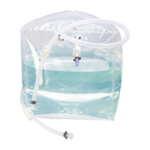 Single-Use
Single-Use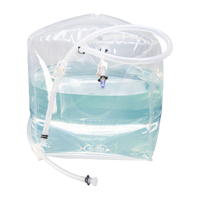
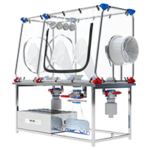 Isolators
Isolators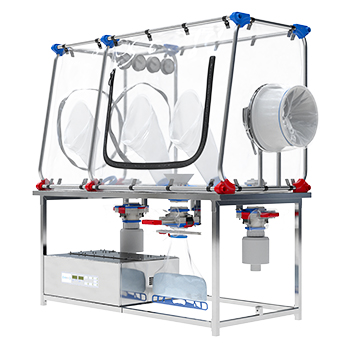
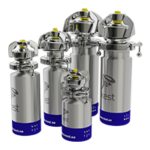 Mixers
Mixers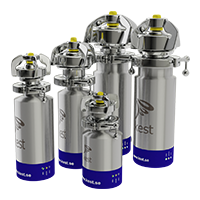
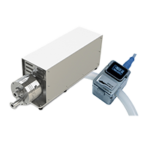 Pumps & Flow Measurment
Pumps & Flow Measurment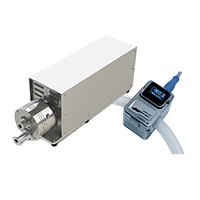
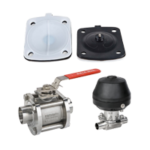 Valves
Valves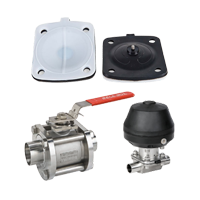
 Seals
Seals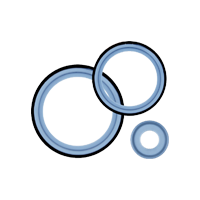
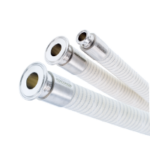 Hoses
Hoses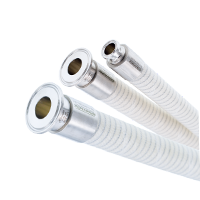
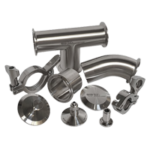 Fittings
Fittings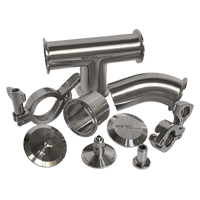
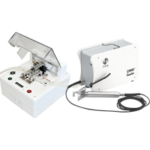 Tube Sealers & Welders
Tube Sealers & Welders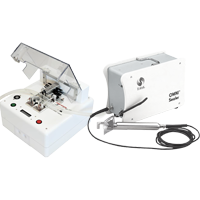
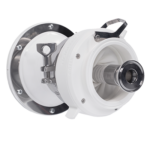 Transfer Ports
Transfer Ports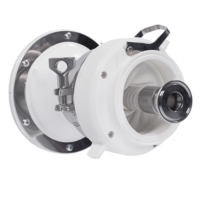
 Validation
Validation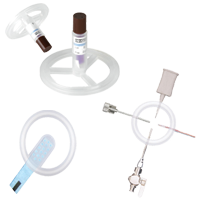
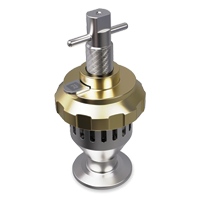
 We utilize cookies to ensure you have the best possible experience while visiting our website.
We utilize cookies to ensure you have the best possible experience while visiting our website.